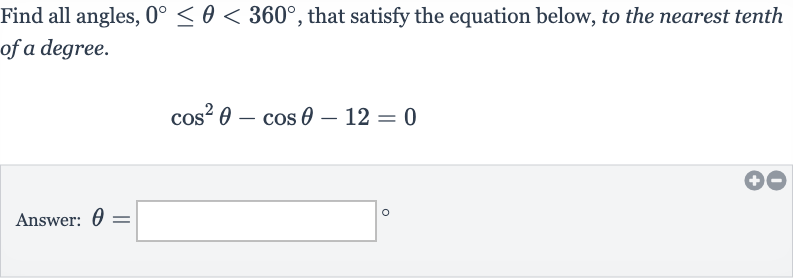Full solution
Q. Find all angles, , that satisfy the equation below, to the nearest tenth of a degree.Answer:
- Solve Quadratic Equation: Let's first solve the quadratic equation in terms of . The equation is . We can treat as a variable, say 'u', and rewrite the equation as . Now we can factor this quadratic equation.
- Factor Quadratic Equation: To factor the quadratic equation , we look for two numbers that multiply to and add up to . These numbers are and . So we can write the equation as .
- Identify Valid Solutions: Now we have two possible solutions for : or . Solving for gives us or . However, since represents and the range of the cosine function is , is not a valid solution. Therefore, we only consider , but again, this is outside the range of the cosine function, so there are no solutions in terms of cosine.
- Conclude No Solutions: Since there are no valid solutions for in the range , we conclude that there are no angles between and degrees that satisfy the original equation .

